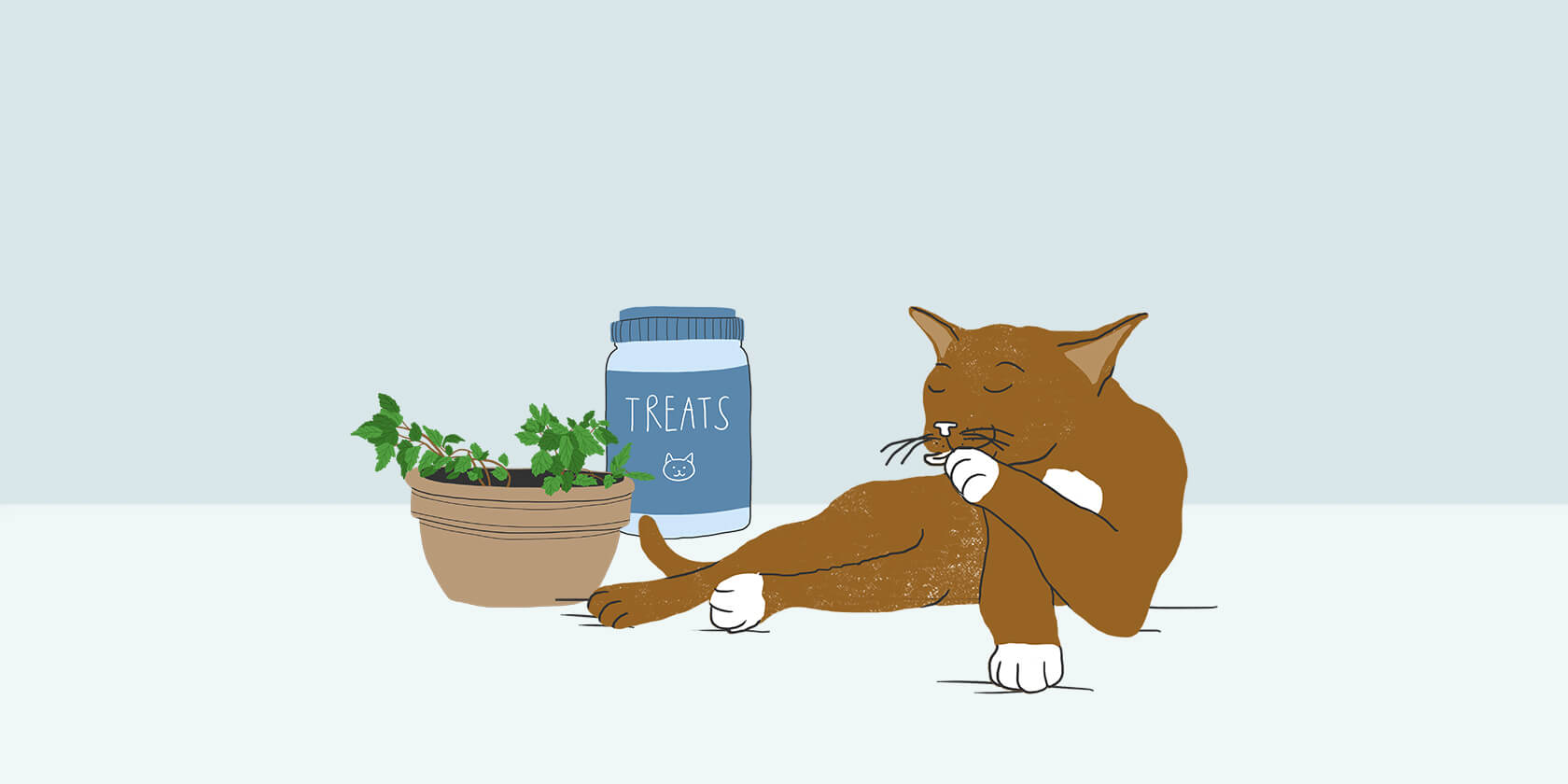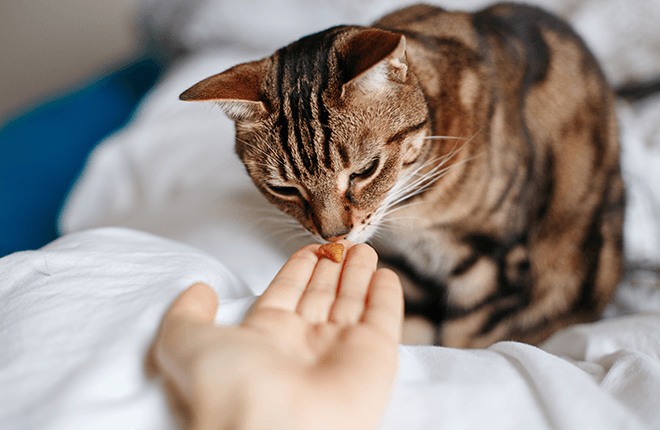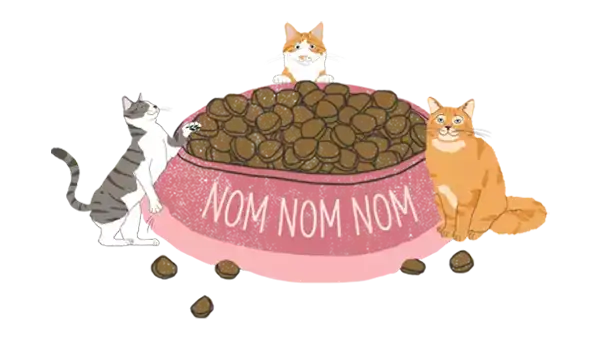One way to give your cat some “pawsitive” reinforcement is with catnip treats. When catnip is sniffed, a majority of cats respond — some don’t due to genetics — by experiencing a mild and short “high” (approximately 10 minutes). You’ll notice your cat exhibiting behaviors like rubbing their head or body, rolling, vocalizing, and salivating — many of which are quite entertaining to watch! Don’t worry, these catnip effects are pleasurable for your cat[1]. It’s believed that one of catnip’s oils, called nepetalactone, stimulates a sensory response in the brain similar to smelling another cat’s pheromones[1].

Since catnip is one of the few plants that are safe for cats, whip up these tasty treats as a reward for your cat’s good behavior.
Ingredients
- ½ cup whole wheat flour
- ½ cup nonfat dry milk powder
- ½ can tuna in oil
- 1 tablespoon vegetable oil
- 1 egg beaten
- ¼ cup water
- ¼ cup finely crushed dry catnip
Instructions
- Preheat oven to 350℉ and spray cookie sheet with cooking spray.
- In a large bowl, mash the tuna and break up any large clumps.
- Mix the flour and dry milk powder in with the tuna until thoroughly combined.
- Add water and oil and mix well.
- Beat an egg until foamy then add to the mixture. Expect the dough to be sticky.
- Shape dough into tiny ¼ teaspoon sized balls & roll them in finely crushed dry catnip.
- Place the balls on the cookie sheet and flatten slightly.
- Bake for 10 minutes, remove from the oven and let rest for 5 minutes.
- Turn treats over and bake for an additional 10 minutes.
- Cool treats completely and store in airtight container in the refrigerator.
Recipe inspired by Food.com. This article contains recipe information that is considered suitable for pets. However, not all pets can tolerate different foods — it depends on their age, health history, and health conditions. It is important to consult with your veterinarian before feeding your pet any new foods or offering your pet any of the ingredients contained in this recipe.
ZPC-01059R1
- Bernachon N, Beata C, Crastes N et al. Response to Acute Stress in Domestic Cats Using Synthetic Analogues of Natural Appeasing Pheromones with Nepeta cataria Extract Rich in Nepetalactone: A Double-blinded, Randomized, Positive Controlled Cross-over Study. Intern J Appl Res Vet Med. 2015;13(2):125-134.



